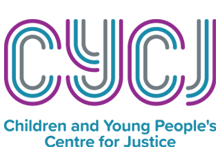“No one really wants children ‘tagged’, but ultimately, no one wants to see children being locked up.” Fiona Dyer considers the merits of electronic monitoring, otherwise known as ‘tagging’ and the impact it has – and can have – on care options.
When MRC’s were first introduced for children, I, like many other social workers, was sceptical. How was tagging a child a good idea? What benefits would it bring to them? And what did I need to do as a social worker if it happened?
As it was all new, and I was very keen, of course I didn’t wait long until the opportunity arose where secure care was being considered for one of my clients who was classed as a ‘persistent offender’. After his family got over the anger and rage that someone was going to lock up their child, they of course jumped at the idea that he could remain at home on a tag, even if it did mean that they would need to be involved in his support package.
It was agreed that this was the plan we would present to the next hearing, but that we would start the support package immediately, so an emergency meeting of all professionals involved with the young person was called. This included his mainstream school pastoral care teacher (guidance teacher as it was then – now I am showing my age!), additional education support, youth justice worker, youth justice mentor, children and families social worker and leisure/sport type organisation that he was involved with. Being overly organised, I created a seven day planner from 8am to 8pm that was 2 by 4 meters, which I attached to the wall of the conference room. Having spoken to the family regarding their availability, which included extended family offering support, I assured them that every single hour of my client’s life was accounted for over a four week period, after which we agreed to review. No one was allowed to leave the room until they had agreed what support they would offer, which included seeing him in the evening and weekends.
Having went through this experience, and seeing the difference ‘intensive support’ actually made for this young person, not only was secure care avoided, but ultimately so was the ‘tag’ due to his engagement with his programme. I don’t think he had ever been given so much attention that he was thriving on it, and reduced his offending significantly. Of course there were some issues along the way, as an angel he was not. But after reducing his support over the following two months, he managed to maintain better behaviour on the whole.
This case in point is of course only one example of what intensive support looks like. Other examples are included in my recent MRC paper. Of course it is not for everyone and some young people, due to the risk they present to themselves or others, do perhaps need what a secure unit can offer, or will have experiences of breaching a ‘tag’. Others, however, maybe don’t and an MRC could/should be at the very least explored. Needing resources is of course an issue, but being creative and using family where appropriate/possible and resources within local communities should be a priority. Get them into the social work office every day if required; or in fact, tag them to attend the social work/voluntary sector office for 30 minutes every day just to make sure they are OK, if that is what it takes. Do it at lunchtime and feed them. Address whatever risk it is that they present, and be creative in the process.
No one really wants children ‘tagged’, but ultimately, no one wants to see children being locked up. But we are still locking up more young people than we are tagging. In fact, the use of the ‘tag’ does not appear to have had any impact on secure care numbers in Scotland – as can been seen in my recent paper. Of course, perhaps MRCs are being used earlier and maybe not working? Or are they being used as part of a step-down process? Using a MRC as part of a step-down process from secure care allows young people to return to communities, to appropriate accommodation, with intensive support in place, where their chance of a positive outcome would be greatly improved. Which is surely what we all want?
Ultimately what we need to do is explore all options available as an alternative to secure care and promote these with decision makers at all opportunities. We need to be creative in our ability to seek out resources and manage risk. Then we would only be using secure care for the young people who need it most, and not due to there being ‘nothing else available’.
About our blogger
As CYCJ’s Practice Development Manager, Fiona is responsible for leading and developing practice development and change across Scotland. Find out more.

Leave a Reply
You must be logged in to post a comment.